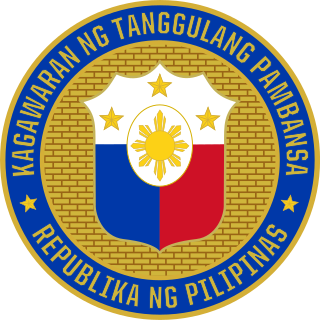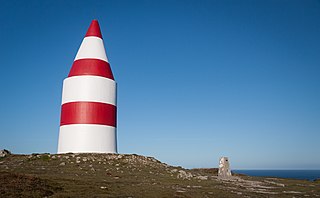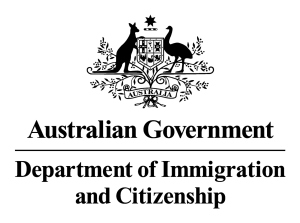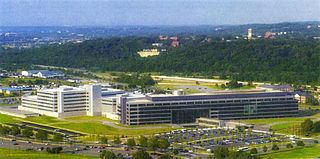
A diode is a two-terminal electronic component that conducts current primarily in one direction ; it has low resistance in one direction, and high resistance in the other. A diode vacuum tube or thermionic diode is a vacuum tube with two electrodes, a heated cathode and a plate, in which electrons can flow in only one direction, from cathode to plate. A semiconductor diode, the most common type today, is a crystalline piece of semiconductor material with a p–n junction connected to two electrical terminals. Semiconductor diodes were the first semiconductor electronic devices. The discovery of asymmetric electrical conduction across the contact between a crystalline mineral and a metal was made by German physicist Ferdinand Braun in 1874. Today, most diodes are made of silicon, but other materials such as gallium arsenide and germanium are used.

The Secretary of Defense (SecDef) is the leader and chief executive officer of the United States Department of Defense, the executive department of the Armed Forces of the U.S. The Secretary of Defense's position of command and authority over the U.S. military is second only to that of the President and Congress, respectively. This position corresponds to what is generally known as a Defense Minister in many other countries. The Secretary of Defense is appointed by the President with the advice and consent of the Senate, and is by custom a member of the Cabinet and by law a member of the National Security Council.

The National Security Act of 1947 was a major restructuring of the United States government's military and intelligence agencies following World War II. The majority of the provisions of the Act took effect on September 18, 1947, the day after the Senate confirmed James Forrestal as the first Secretary of Defense.

The Chinese People's Liberation Army (PLA) is the armed forces of the People's Republic of China (PRC) and its founding and ruling political party, the Communist Party of China (CPC). The PLA consists of five professional service branches: the Ground Force, Navy, Air Force, Rocket Force, and the Strategic Support Force. Units around the country are assigned to one of five Theater commands by geographical location. The PLA is the world's largest military force and constitutes the second largest defence budget in the world. It is one of the fastest modernising military powers in the world and has been termed as a potential military superpower, with significant regional defense and rising global power projection capabilities. China is also the third largest arms exporter in the world.
Open-source intelligence (OSINT) is data collected from publicly available sources to be used in an intelligence context. In the intelligence community, the term "open" refers to overt, publicly available sources. It is not related to open-source software or public intelligence.

The Main Directorate of Intelligence of the Ministry of Defence of Ukraine or HUR MOU, is Ukraine's military intelligence intelligence service. It is a subdivision of the Ministry of Defence of Ukraine, not the General Staff of the Armed Forces of Ukraine. It was in fact built upon the existing intelligence assets of the Kiev, Odessa and Carpathian military districts of the Soviet Armed Forces.
The Defence Strategic Policy and Intelligence Group (SP&I) of the Australian Government Department of Defence is responsible for defence diplomacy, strategic policy, international security, and military intelligence co-ordination and advice to the Prime Minister of Australia, Minister for Defence, Secretary of the Department of Defence, and Chief of the Defence Force. The Defence Strategic Policy and Intelligence Group is led by the Deputy Secretary for Strategic Policy and Intelligence and comprises four policy divisions and three intelligence agencies, which are the Australian Defence Organisation members of the Australian Intelligence Community.

The Department of National Defense is the executive department of the Philippine government responsible for guarding against external and internal threats to peace and security in the country. The Department of National Defense exercises executive supervision over the Armed Forces of the Philippines (AFP), the Office of Civil Defense (OCD), the Philippine Veterans Affairs Office (PVAO), the National Defense College of the Philippines (NDCP), the Government Arsenal (GA), and the Philippine Aerospace Development Corporation (PADC). It is also responsible for disaster preparation and management in the country.

The Under Secretary of Defense for Intelligence or USD(I) is a high-ranking civilian position in the Office of the Secretary of Defense (OSD) within the U.S. Department of Defense that acts as the principal civilian advisor and deputy to the Secretary and Deputy Secretary of Defense on matters relating to military intelligence. The Under Secretary is appointed from civilian life by the President and confirmed by the Senate to serve at the pleasure of the President.

A daymark or a day marker is the daytime identifier of an aid to navigation (ATON) or daybeacon.
Command and control or C2 is a "set of organizational and technical attributes and processes ... [that] employs human, physical, and information resources to solve problems and accomplish missions" to achieve the goals of an organization or enterprise, according to a 2015 definition by military scientists Marius Vassiliou, David S. Alberts and Jonathan R. Agre, The term often refers to a military system.

The Department of Defense is an executive branch department of the federal government charged with coordinating and supervising all agencies and functions of the government concerned directly with national security and the United States Armed Forces. The department is the largest employer in the world, with nearly 1.3 million active duty servicemen and women as of 2016. Adding to its employees are over 826,000 National Guardsmen and Reservists from the four services, and over 732,000 civilians bringing the total to over 2.8 million employees. Headquartered at the Pentagon in Arlington, Virginia, just outside Washington, D.C., the DoD's stated mission is to provide "the military forces needed to deter war and ensure our nation's security".
Tổng cục Tình báo, other names: Tổng cục 2, TC2 is an intelligence agency of Vietnam.
A cross-domain solution (CDS) is a means of information assurance that provides the ability to manually or automatically access or transfer information between two or more differing security domains. They are integrated systems of hardware and software that enable transfer of information among incompatible security domains or levels of classification. Modern military, intelligence, and law enforcement operations critically depend on timely sharing of information. CDS is distinct from the more rigorous approaches, because it supports transfer that would otherwise be precluded by established models of computer, network, and data security, e.g., Bell–LaPadula model and Clark–Wilson model. CDS development, assessment, and deployment are based on risk management.
The military modernization program of the Chinese People's Liberation Army which began in the late 1970s had three major focuses. First, under the political leadership of Deng Xiaoping, the military became disengaged from civilian politics and, for the most part, resumed the political quiescence that characterized its pre-Cultural Revolution role. Deng reestablished civilian control over the military by appointing his supporters to key military leadership positions, by reducing the scope of the PLA's domestic non-military role, and by revitalizing the party political structure and ideological control system within the PLA.

The federal government of the United States empowers a wide range of law enforcement agencies to maintain law and public order related to matters affecting the country as a whole.










